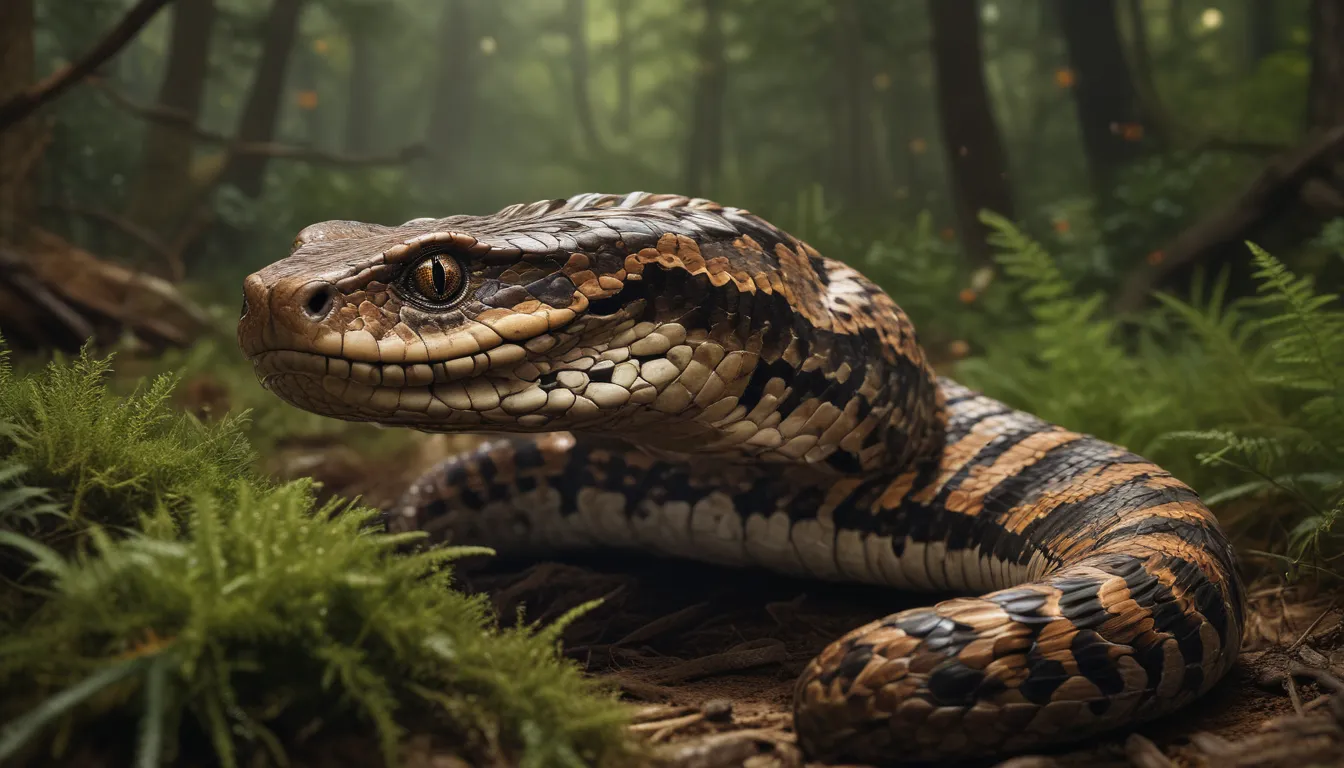The pictures we use in our articles might not show exactly what the words say. We choose these pictures to make you interested in reading more. The pictures work together with the words but don’t take their place. The words still tell you the important facts.
Are you ready to delve into the captivating world of the European adder, also known as Vipera berus? These venomous snakes, native to various parts of Europe, have long piqued the curiosity of humans with their striking appearance, unique behaviors, and role in the ecosystem. In this article, we will uncover nine fascinating facts about European adders, shedding light on their habits, habitats, and remarkable features. Join us on this educational journey through the intriguing realm of these awe-inspiring reptiles!
Delving into the World of European Adders
Let's start by unraveling some key highlights about the European adder that make them truly remarkable:
- The European Adder is the only venomous snake in the UK: Despite its venomous nature, European adders play a crucial role in maintaining the balance of ecosystems by controlling the populations of small animals. They are like the superheroes of the ecosystem, utilizing their venom for hunting and contributing to habitat health and diversity.
A Closer Look at European Adders
The Distinctive Nature of the European Adder
The European Adder, also known as Vipera berus, stands out for several reasons:
- The European Adder is the only venomous snake in the UK: Sporting a zigzag pattern and bright colors, the European Adder serves as a warning to potential predators with its venomous bite. Despite this, they are generally non-aggressive and only strike when provoked, making them less intimidating than they may seem.
Adaptability and Survival Techniques
European Adders showcase impressive survival strategies, including:
- European Adders have a remarkable ability to thermoregulate: By adjusting their body temperature through basking in the sun or seeking shade, these snakes can thrive in various habitats across Europe. This adaptability aids in maintaining optimal physiological functions and enhancing their hunting skills.
Hunting and Reproductive Behaviors
Understanding how European Adders hunt and reproduce sheds light on their fascinating lifestyle:
- The venom of the European Adder is primarily used for hunting prey: A complex blend of proteins and enzymes in their venom immobilizes and digests prey, helping the snakes capture and consume small mammals, birds, and lizards. Their bites, while venomous, rarely prove fatal to humans when promptly treated.
Exploring the Lives of European Adders
Seasonal Routine and Reproduction
European Adders follow a seasonal cycle and employ unique reproductive methods:
- European Adders hibernate during colder months: To conserve energy and survive colder temperatures, these snakes enter a dormant state in sheltered areas like burrows or rock crevices. They emerge rejuvenated when the warmer months arrive.
- The European Adder can give birth to live young: Unlike most snake species, European Adders are ovoviviparous. Females carry their eggs internally and give birth to a small number of well-developed offspring during late summer or early autumn.
Habitat and Behavior
European Adders exhibit a wide distribution and engaging behaviors across diverse environments:
- The European Adder has a wide distribution across Europe: From grasslands and woodlands to mountainous regions, these adaptable snakes thrive in various habitats. Their presence contributes to the ecological diversity of Europe.
- Male European Adders engage in ritualistic combat during the breeding season: Known as "the dance of the adders," this ritualistic combat helps establish dominance and determine mating opportunities with receptive females.
Conservation and Protection
Due to declining populations, European Adders are now a protected species in several European countries:
- European Adders play a vital role in the ecosystem: As important predators, they aid in controlling populations of small mammals, birds, and lizards, contributing to the balance and health of ecosystems. Conservation efforts aim to safeguard their populations and preserve their ecological significance.
- The European Adder is a protected species: Legal protections are in place to prevent intentional harm or killing of European Adders. Conservation measures ensure the preservation of these snakes and their crucial role in maintaining biodiversity.
Conclusion: Embracing the Enigmatic European Adder
The European adder, with its distinctive features and vital ecological role, continues to captivate researchers, nature enthusiasts, and snake aficionados alike. By unraveling the mysteries of these intriguing creatures, we gain a deeper appreciation for their place in the natural world.
From their thermoregulatory skills to their reproductive habits, European Adders display a blend of resilience and adaptability that sets them apart in the snake kingdom. As you encounter these snakes in the wild or seek to expand your knowledge, remember the fascinating facts that highlight the uniqueness of the European adder.
FAQs: Unveiling More Insights
Would you like to delve further into the world of European Adders? Explore some common questions and enrich your understanding:
- Are European adders dangerous to humans?
-
European adders are venomous but rarely pose a fatal threat to humans. Immediate medical attention is crucial if bitten to address symptoms such as pain and swelling.
-
What do European adders eat?
-
European adders are carnivorous creatures that prey on small mammals like mice and voles, along with birds, lizards, and occasionally other snakes.
-
Where can European adders be found?
-
European adders inhabit a variety of habitats across Europe, including grassy meadows, forests, heathlands, and rocky slopes. They may also be present in parts of Western Asia.
-
Do European adders hibernate?
-
Yes, European adders hibernate during winter to conserve energy. They seek shelter in burrows or protected areas and emerge when temperatures grow warmer in spring.
-
How do European adders defend themselves?
-
European adders utilize various defense tactics, including venomous bites when threatened. However, they often choose to flee rather than attack, and may display warning behaviors like body flattening and hissing.
-
Are European adders protected by law?
- Yes, European adders enjoy legal protection in many countries due to declining populations. Harm, capture, or trade without proper permits or licenses is prohibited to safeguard these snakes.
Unlocking More Mysteries of the Serpentine World
For those intrigued by cold-blooded creatures, an exploration of venomous snakes and reptilian wonders awaits. Dive into the depths of knowledge surrounding these captivating beings, from their scaly exteriors to their cold-blooded essence. Whether you're a dedicated snake enthusiast, a lover of reptiles, or simply curious about the captivating world of these creatures, there's an endless trove of discoveries waiting to be made.
Embracing Trustworthy Information and Engaging Content
At the core of our mission lies a commitment to delivering credible, engaging content that enriches your understanding of the natural world. Each fact presented is a contribution from individuals like you, ensuring a diverse range of insights and information. Our dedicated editors meticulously review each submission to uphold the highest standards of accuracy and authenticity. We invite you to trust in our dedication to quality as you embark on a journey of discovery and learning.
By immersing yourself in the world of European adders and unlocking their enigmatic secrets, you pave the way for a deeper connection with the wonders of nature. Let the knowledge gained from this exploration fuel your curiosity and appreciation for the magnificent creatures that inhabit our planet.






